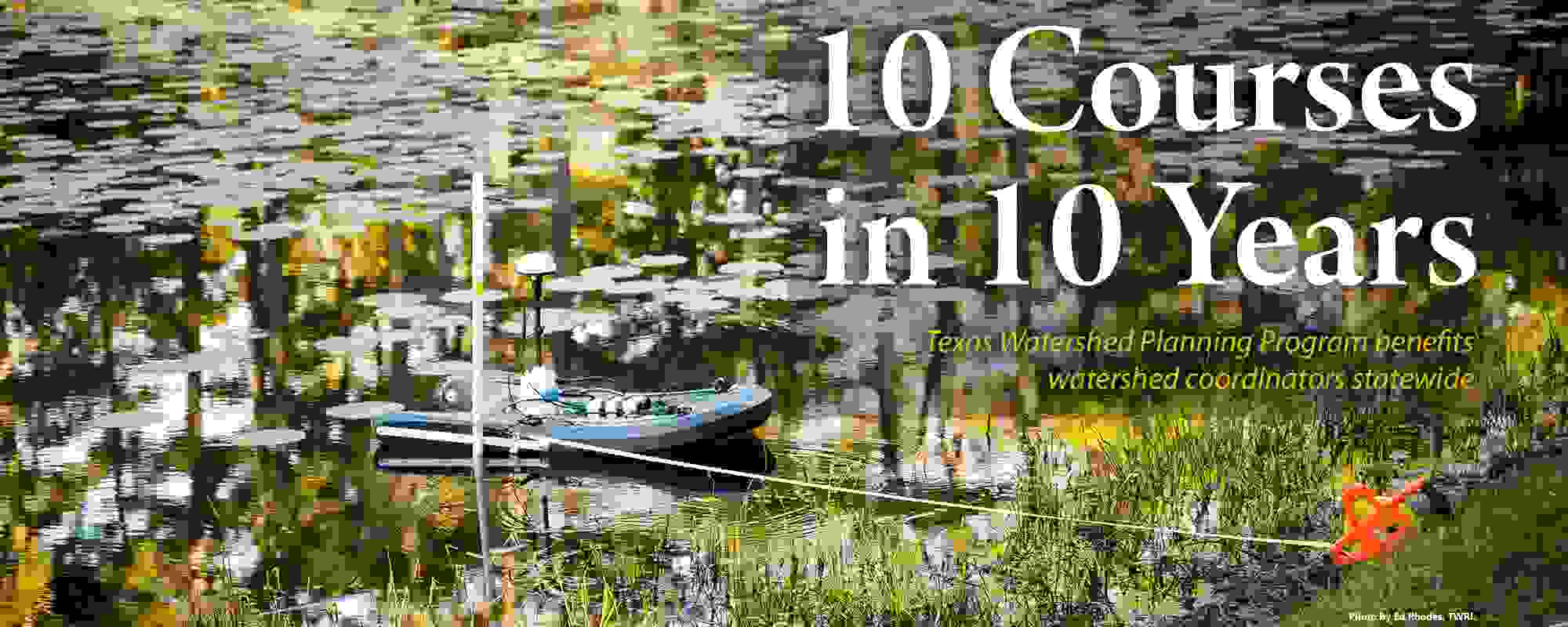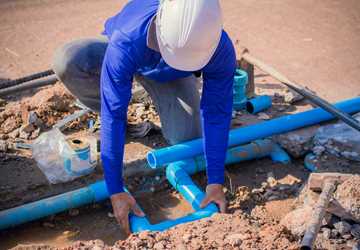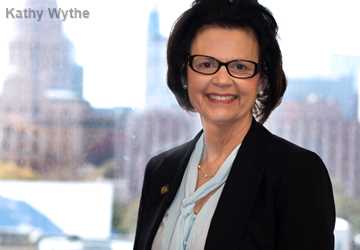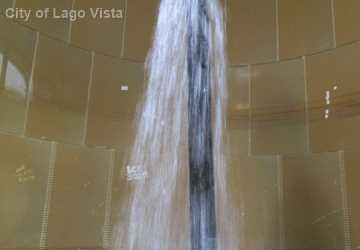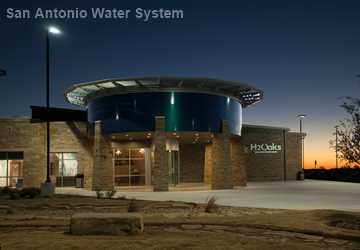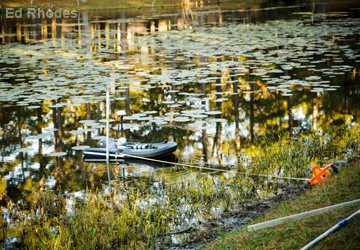In 2008, Dickie Clary from the small Central Texas town of Hamilton attended the first Texas Watershed Planning Short Course at the Mayan Dude Ranch in Bandera, Texas. The 4 1/2 day course, hosted by the Texas Water Resources Institute (TWRI), provided Clary and other attendees essential information for managing water quality throughout the state.
Ten years and 10 courses later, more than 300 watershed coordinators and other water professionals have attended and benefited from the course.
“Our short course, part of the Texas Watershed Planning program, provides needed training and sustainable proactive approaches to managing water quality throughout the state to watershed coordinators and other water resources professionals,” said Dr. Lucas Gregory, senior research scientist and quality assurance officer for TWRI.
“This is the only watershed planning short course in the state or, in fact, in the nation,” Gregory said. “So far, we have educated almost every watershed coordinator in Texas.”
While not a watershed coordinator, Clary, a Hamilton County Commissioner and landowner, believed he had a stake in water quality in his county. He said it was important for him to learn as much about surface water quality as possible, so he could represent the views and concerns of Hamilton County citizens.
Ten years and 10 courses later, more than 300 watershed coordinators and other water professionals have attended and benefited from the Texas Watershed Planning Short Course.
More information
Want to get txH20 delivered right to your inbox? Click to subscribe.

“The short course helped me learn the basics about surface water quality issues and provided useful knowledge about how watershed planning can be an effective tool in solving water quality impairments in local watersheds,” he said of attending the 2008 course. “Through the course, I developed an understanding of surface water quality vocabulary and the various state and federal agencies that have a direct impact on regulations and implementation plans related to surface water quality issues.”
Gregory said the multi-day short course provides guidance on stakeholder coordination, education and outreach.
“We strive to make sure the program meets the U.S. Environmental Protection Agency (EPA)’s nine key elements of a watershed protection plan, ensure accurate data collection and analysis and provide the necessary tools for plan development,” he said.
He said helping ensure proposed protection plans meet EPA requirements is necessary to have watershed protection plans approved and secure Clean Water Act funding.
“This training gives water professional the tools they need to develop a plan they can use to conserve and protect the state’s water resources,” he said. “Having these plans in place can go a long way toward making sure we are prepared to handle the state’s ever-increasing population and other future challenges.”
TWRI has partnered with numerous other entities to present the short course throughout the 10 years, including Texas A&M AgriLife Extension Service, Texas A&M AgriLife Research, Texas State Soil and Water Conservation Board, Texas Commission on Environmental Quality, EPA and the Texas Institute for Applied Environmental Research.
This is the only watershed planning short course in the state or, in fact, in the nation. So far, we have educated almost every watershed coordinator in Texas.
Dr. Lucas GregoryMike Bira, EPA Region 6 environmental scientist and frequent presenter at the short course, said EPA strongly supports watershed-based planning through the states’ nonpoint source (NPS) management programs.
Under the Clean Water Act Section 319, states, territories and tribes receive grant money to support NPS programs such as watershed-based planning and education.
“The NPS program is the most efficient way to protect and restore our nation’s surface waters when they are impacted by NPS pollution,” Bira said.
The short course is one of several courses the Texas Watershed Planning Program offers to watershed coordinators and other water professionals in Texas.
Gregory said because the program’s goals are to ensure watershed protection efforts are adequately implemented and to improve water quality restoration efforts statewide, TWRI is always considering additional courses designed to increase watershed professionals’ expertise.

Over the past 10 years, Gregory said, the program also has hosted 19 biannual Texas Watershed Coordinator Roundtables and 31 additional courses. The roundtables, usually held twice a year, provide a forum for dialogue between watershed coordinators, facilitate interactive solutions to common watershed issues faced throughout the state and add to the fundamental knowledge conveyed at the short courses.
He said topics at the additional trainings include watershed modeling, using social media to connect with stakeholders, fundamentals of developing a water quality monitoring plan and urban best management practices for watershed planning.
“During the 2018 fiscal year, we conducted two roundtables — one in Austin and one in College Station,” he said. “We also organized the first week-long Texas Watershed Planning Short Course in Navasota and coordinated four different watershed trainings for professionals in Austin, Lewisville and College Station.”
The Texas Watershed Planning Program is currently funded through a Clean Water Act nonpoint source grant provided by the Texas State Soil and Water Conservation Board and EPA.
It has received Clean Water Act funding through the Texas Commission on Environmental Quality in previous years.
Clary, who currently serves as charter member of the planning and advisory committees for both the Leon River and Lampasas River watershed protection plans, said the short course was one of the most beneficial training events that he has ever attended. He has also attended several roundtables.
“It helped pave the way for a much broader understanding of various surface water quality issues,” Clary said, “and has undoubtedly helped me be more productive and successful in developing and advancing water quality programs that affect the citizens of Hamilton County and perhaps others across Texas.”
Explore this Issue
Authors
As the former communications manager for TWRI, Kathy Wythe provided leadership for the institute's communications, including a magazine, newsletters, brochures, social media, media relations and special projects.

